Abstract
Orientation: This study investigated the relationship between the equity markets and foreign exchange markets in Brazil, Russia, India, China and South Africa (BRICS).
Research purpose: This study examined the financial connectedness through volatility spillovers and co-movements among equity and foreign exchange markets in the BRICS countries to better understand market interdependencies.
Motivation for the study: The literature mainly focused on volatility transmission from developed countries.
Research approach: This research, used the Diebold and Yilmaz spillover index approach (DY index). The DY index is based on variance decompositions (VD) and impulse response functions that use a vector autoregressive (VAR) modelling framework. The study period was from 02 January 1997 to 31 December 2018.
Main findings: Shocks from the equity markets dominate the foreign exchange markets, while foreign exchange markets dominate their equity markets at an individual level. There are interdependencies between BRICS equity markets and foreign exchange markets, except for China, whose markets are relatively isolated from other BRICS markets. Brazil is the largest contributor of volatility spillovers to other BRICS markets. The South African rand is the most integrated within BRICS.
Practical implications: Foreign exchange markets provided better diversification opportunities. Significant increases in volatility spillovers associated with turmoil periods in domestic and global markets provide evidence for contagion effects in BRICS markets.
Contribution: The current account (flow-oriented model) is crucial in exchange rate determination at the individual country level. In contrast, the capital account (stock-oriented model) is a significant factor in exchange rate determinations at an aggregate level.
Keywords: BRICS; DY spillover index; equity market; foreign exchange rate market; volatility spillover; contagion; financial connectedness.
Introduction
International investors are increasingly more interested in how volatility in one market, for example, the foreign exchange market, affects volatility in other capital markets. Accelerating international financial integration and liberalisation of capital markets have led to increased capital flows between countries, gradually increasing the level of co-movements in various financial markets and thus increased volatility spillovers (Aloui Aissa & Nguyen 2011; Evans & Hnatkovska 2014; Kim & Lee 2017; Pramor & Tamirisa 2006). An increase in co-movement between the markets over time would imply fewer opportunities for diversification to hedge against risk in a portfolio. In the literature, volatility spillovers generally refer to how volatility in one asset transmits into the volatility of other assets. Various studies of volatility co-movements tended to focus on the degree to which the volatility in one security may be related to the volatility of another security at a certain period (Arshanapalli & Doukas 1993; Dedi & Yavas 2016; Kavli & Kotze 2014; King et al. 1994).
One argument in the literature is that financial integration may enhance financial stability through risk diversification (Babecky, Komarek & Komarkova 2013; Levine 1997; Mishkin 2007; Nicolo & Juvenal 2014). However, some studies also show that a significant threat to financial integration is the increased risk of financial instability (Agenor 2003; Eslamloueyan & Fatemifar 2021; Motelle & Biekpe 2015; Stiglitz 2002). In the aftermath of the global financial crisis (GFC), studies show that shocks in financially integrated markets can quickly spread and spill over to other markets (Deveraux & Yu 2020; Eslamloueyan & Fatemifar 2021; Glasserman & Young 2015; Rejeb & Boughrara 2015). Thus, increased financial integration can lead to contagion where shocks from one country (or a group of countries) intensify cross-market linkages and co-movement of asset price shocks to other countries (Biekpe & Motelle 2018).
Since the early Nineties, because of economic reforms, there has been a surge of capital flows from foreign investors into developing economies’ capital markets (Calvo, Leiderman & Reinhart 1996, 2018). However, like other emerging market economies, capital flows to Brazil, Russia, India, China and South Africa (BRICS) are very volatile, resulting in volatile exchange rates (Ferreiro & Serrano 2011; Kohler 2019). Caporale et al. (2015) posit that exchange rate volatility increases the costs of international financial transactions and reduces the potential gains from international diversification; in support of this, Tarakci, Olmez and Durusu-Ciftci (2022) find that exchange rate volatility negatively affects Turkey’s exports in the long run. The BRICS countries’ economies vary significantly regarding sociodevelopment and political regimes. Furthermore, their sizes and standards of living are very diverse. For example, according to the World Bank (2018) data, China’s economy alone is more than that of the other BRICS countries combined, and it is more than 37 times the size of the South African economy. Specifically, the five countries account for more than 40% of the world population (IMF 2018). The BRICS economies’ share of global gross domestic product (GDP) has increased from 18% in 2000 to more than 31% in 2016, and China alone holds approximately 18% of the total global GDP (IMF 2017). Wilson and Purushothaman (2003) project that by 2040, BRICS economies will be among the most dominant economies alongside the United States (US) and Japan, surpassing other G6 countries. Also, according to the New Development Bank (NDB) 2017 report, the combined economic weight of the BRICS countries in 2015 was close to that of the G7 countries. The BRICS countries attract significant portfolio flows and are also essential sources of cross-border flows into other emerging markets and developing economies (EMDEs) (NDB 2017), which signifies the increasing importance of BRICS in the global economic system.
Emerging market returns tend to be more volatile when compared with more developed markets (Bekaert & Harvey 1997). Volatility spillovers can be ‘a source of concern because they can propagate volatility shocks between the markets and increase the risk of a financial crisis’ (Bonga-Bonga & Hoveni 2013:261). Bae et al. (2003) show that the high degree of risk inherent in emerging markets makes them more susceptible to financial crises and contagion. Moreover, in the first empirical study on contagion, King and Wadhani (1990) suggest that increased volatility increases the size of contagion effects. Recent studies on volatility spillovers support these views (BenSaida, Litimi & Abdallah 2018; Leung, Schiereck & Schroeder 2017). Aroul and Swanson (2018) point to how the BRICS countries’ markets are susceptible to US markets, while Hammoudeh et al. (2013) focused on the spectrum of risks affecting BRICS countries.
Studies show that trade linkages can also transmit the effects of currency crises or, more generally, economic disturbances from one country to another (Bodart & Carpantier 2022; Jiang et al. 2022). As BRICS economies have become increasingly integrated into the global economy through trade and investment linkages, they have also become more susceptible to economic and financial disturbances from other countries (Aloui et al. 2011; Leung et al. 2017). Likewise, the increase in intra-BRICS trade, which has more than doubled from 1998 to 2016, increases the likelihood of volatility spillovers and contagion effects among their financial markets. The Fortaleza Declaration adopted at the Sixth BRICS Summit held in 2014 put forth trade and investment facilitation as one of the priority areas for intra-BRICS (BRICS 2017). As trade linkages increase, an even higher likelihood of volatility spillovers and contagion effects is expected among their financial markets. Thus, understanding volatility co-movement and spillover effects between markets in BRICS is crucial to the management and prevention of financial crises in the bloc. In addition, understanding the financial connectedness of BRICS equity and foreign exchange markets is important for international investors who wish to diversify their portfolios and take advantage of the high growth rates in these markets.
There is a growing body of literature on volatility spillover effects and co-movement among financial markets. However, most of the studies provide conflicting results, and most of the studies on volatility spillovers in BRICS countries focus on volatility transmission from developed countries (the US and the UK) to BRICS stock markets during the GFC (Chkili & Nguyen 2014; Mensi et al. 2016, 2021; Mishra et al. 2007; Sui & Sun 2016). A few studies have also looked at contagion factors that impact BRICS equity markets (Aloui et al. 2011; Hwang et al. 2013; Mensi et al. 2014). This study extends the previous studies by examining the financial connectedness in BRICS economies through volatility spillovers among equity and foreign exchange markets. Determining the exact nature of these relationships will assist investment analysts and portfolio managers seeking to manage their risk and diversify their investments in this country grouping.
This study applies various econometric approaches, specifically the general autoregressive conditional heteroskedasticity (GARCH) – type models to calculate volatilities in the returns series. Similar to Bonga-Bonga and Hoveni (2013), the study does not impose a single structural representation of the volatility model for all the markets; instead, we select the appropriate volatility model to account for critical stylised facts of the financial returns data. To calculate total and directional spillover indices for BRICS equity and foreign exchange markets, the study uses the Diebold and Yilmaz spill over index (DY index). The DY index is based on the generalised vector autoregressive model (Diebold & Yilmaz, 2009; 2012).
This article has five sections. The ‘Literature review’ section reviews the theoretical and empirical literature regarding the effects of volatility spillovers between the exchange and stock markets. The ‘Methodology and data’ section outlines the data and the methods used. Empirical results are reported and discussed in the ‘Results’ section. The ‘Conclusion’ section summarises the findings, concludes the article and gives policy recommendations.
Literature review
Two main theoretical frameworks are proposed in the literature to explain the interdependence between equity and exchange rate markets. According to the flow-oriented model, the current account is an important factor in exchange rate determination. The model suggests that exchange rates will affect stock prices through their effect on international competitiveness and trade balance and thus influence countries’ outputs and real incomes. Because stock prices reflect the present value of expected income, fluctuations in the exchange rate affect stock prices (Dornbusch & Fischer 1980). On the other hand, the stock-oriented models emphasise the capital account as an essential element in exchange rate determination. There are two types of stock-oriented models: the portfolio balance and monetary approach models. These models show that movements in the stock markets lead to inflow and outflow of money as investors rebalance their portfolios. The demand for money is directly affected and thus leads to changes in interest rates and subsequently exchange rate movement (Frankel 1983).
These theories are of particular interest in this study because a significant amount of foreign capital flowing from advanced economies to EMDEs is directed to BRICS countries, especially China. Furthermore, the BRICS countries pursue export-oriented growth strategies and import a good deal of raw materials for production (BRICS 2017). Thus, the value of the domestic currency and how it is determined are important to BRICS economies.
This study considers the empirical literature along three strands: studies that focus on volatility transmission in the foreign exchange markets, those that focus on volatility transmission in stock markets and finally, studies that look at volatility spillovers across both stocks and exchange rate markets.
In their pioneering work on volatility spillovers, Engle et al. (1990) investigate the ‘heat waves’ and ‘meteor showers’ hypotheses of volatility in the Japanese Yen and USD exchange rate. According to the heat waves hypothesis, volatility in one market continues in the same market the next day, while the meteor showers hypothesis allows volatility to be transmitted across markets. They find significant evidence for ‘meteor shower’-type volatility spillover effects where volatility in the exchange rate during Tokyo trading hours spills over to other markets. Baillie and Bollerslev (1990) also find that over 6 months in 1986, hourly patterns in volatilities of four major exchange rates exhibited remarkably similar patterns and appeared to be serially correlated. McMillan (2001) studied the common trend and volatility in the Deutsche mark and French franc per dollar exchange rates. By using a multivariate random walk stochastic volatility model, they found a very high correlation between the volatility innovations. It suggests that volatility innovations follow a common trend so that, in essence, the volatilities are co-integrated. In a relatively recent study, Kavli and Kotze (2014) investigated the spillover effects of exchange rate returns and volatility for developed and emerging market currencies from 1997 to 2011. They find evidence that spillovers in exchange rate returns have increased steadily, reacting moderately to economic events. In addition, similar to the results of Antonakakis (2012), they found the magnitude of spillovers has increased post GFC. The latter found that in the Euro area, economic episodes are positively correlated with spillovers. Rajhans and Jain (2015) confirm that the US dollar (USD) to British pound sterling (GBP) and the USD to Australian dollar (AUD) markets are largely sensitive to external economic events and are net receivers, while the USD to Canadian dollar (CAD) is a net transmitter and mainly sensitive to domestic factors.
Concerning equity markets, Hamao, Maulis and Ng (1990) use the GARCH framework to examine the Tokyo, London and New York stock markets around the 1987 stock market crash. They find significant evidence of price volatility spillovers from New York to Tokyo, London to Tokyo and New York to London (Hamao et al. 1990). King et al. (1994) investigate volatility and links between 16 national stock markets from 1970 to 1988 and find that international equity markets go through specific periods of sustained co-movement, such as the 1987 stock market crash and other periods of low correlation between the markets. They conclude that there is no evidence for capital market integration (King et al. 1994). Edwards and Susmel (2001) study the behaviour of volatility for a group of emerging Latin American economies, and while they find strong evidence of volatility co-movement across the stock markets (especially among Mercosur countries), they find no evidence for contagion (Edwards & Susmel 2001). Forbes and Rigobon (2002) show that there is high level of stock market co-movements during both crisis periods. However, they argue that there is no contagion during crises, only interdependence (Forbes & Rigobon 2002). Wahid, Mumtaz and Mnatell (2019) highlight the strong spillover effects from the United States, Canada, Australia and Ireland markets through cross-listed firms in alternative markets.
In contrast, studies show evidence to support increased financial market interdependence and contagion during crisis periods (Baele 2005; Bekaert et al. 2014; Chiang et al. 2007). Baele (2005), while studying the effects of globalisation and regional integration in increasing equity market interdependence, investigates volatility spillovers from the aggregate European (EU) and US markets to 13 local EU equity markets. Key findings from the study show that volatility spillovers in both the EU and the US increased significantly over the Eighties and Nineties, and during periods of high world market volatility, there is evidence for contagion from the US market to several local EU countries’ equity markets. Diebold and Yilmaz (2009) propose a spillover index constructed from the VD of the vector autoregression (VAR) models of stock markets of 7 developed and 12 emerging market economies. They find that spillovers in the volatility of equities are highly responsive to crisis events, while return spillovers show a steadily increasing trend but are not responsive to crisis events. Therefore, return spillovers show no evidence of contagion, but volatility spillovers indicate the presence of contagion. In a similar study, they used a dynamic factor model; Bekaert et al. (2014) analysed the GFC transmission across 55 equity markets and 10 sectors; they found evidence of contagion. Moreover, they find a particularly significant contagion from domestic markets to individual domestic portfolios, with the countries with the worst macro-economic fundamentals affected the most. In the context of BRICS, studies that examine the spillover effect between the US and BRIC(S) stock markets find evidence of significant shocks and volatility transmission between the US and BRICS markets (Dimitriou et al. 2013; Jin & An 2016; Mensi et al. 2016; Syriopoulos et al. 2015). Mensi et al. (2021) analysed the period from 2000 to 2018 and found that the BRICS countries contributed the second-most short-term volatility spillovers after the developed markets. Looking at the US equity market and emerging equity markets, Vo and Tran (2020) found significant volatility spillover from the US markets to the Association of Southeast Asian Nations (ASEAN) markets.
To analyse the relationship between exchange rates and stock returns, Kanas (2000) studied the volatility spillovers between the exchange rate and the stock price in six industrial countries: Canada, Japan, the United Kingdom, Germany, France and the United States. Kanas found that except for Germany, there is strong evidence of volatility spillover from the stock market to the exchange market; however, spillovers from exchange rate returns to stock returns were not significant across all the countries. He also finds that volatility spillovers are symmetrical around the release of bad and good news (Kanas 2000). In similar research, Yang and Doong (2004) investigate the nature of the mean and volatility transmission mechanisms in the two markets but expand the sample size to all G7 countries. They also find a unidirectional volatility spillover from the stock market to the foreign exchange market. However, they find that volatility spillover effects are asymmetric. Van der Westhuizen, Van Eyden and Aye (2022) also found asymmetric volatility spillovers from between the stock market and the foreign exchange market for South Africa. Several studies show that the foreign exchange market is essentially a receiver of volatility from the equity market and other asset classes (Bonga-Bonga & Hoveni 2013; Diebold & Yilmaz 2012; Duncan & Kabundi 2011). Conversely, Zhao (2010) finds bidirectional volatility spillover effects between the Chinese foreign exchange and stock markets using likelihood ratio statistics. Mishra et al. (2007) also find bidirectional volatility spillovers between the two markets in India, similarly Van der Westhuizen et al. (2022) for South Africa. Erdogan, Gedikli and Cevik (2020) found a unidirectional time-dependent volatility spillover effect from the stock market to the foreign exchange market for the selected emerging economies.
In the context of BRICS, Dahir et al. (2018) found that exchange rates lead stock returns in Brazil and Russia, while for India, stock returns led exchange rates and for South Africa, there is a bidirectional causality. However, they find no correlation between Chinese exchange rates and stock returns. Sui and Sun (2016) focus on the relationship between BRICS exchange rates and stock markets during the GFC and the spillover effects between US and BRICS stock markets. In contrast to Dahir et al. (2018), they find unidirectional spillover effects from the exchange rates to stock returns in the short-run for all BRICS and shocks to the US S&P 500 influence all BRICS stock markets except India. The results are similar to those of Bal, Manglani and Deo (2018), who used the GARCH and EGARCH and found a unidirectional effect from the exchange rate market to the stock market for India. Using Markov-switching (MS) VAR models, Chkili and Nguyen (2014) also find different results. Their findings show the unilateral impact of stock markets on exchange rates for all BRICS except South Africa. They also find that the Chinese yuan (CNY) is insensitive mainly to movements of the US dollar value. Despite conflicting results, what is clear from the literature is evidence of financial connectedness among BRICS financial markets and US stock markets.
Methodology and data
Methodology
This study investigated the relationship and direction of volatility spillovers between equities and foreign exchange markets in BRICS using the Diebold–Yilmaz spillover index.
General autoregressive conditional heteroskedasticity-type models
To construct the volatility spillover indexes, we first need an estimate of volatility in each of the BRICS stock indexes and currencies. Diebold and Yilmaz (2009, 2012) used Garman–Klass (GK) volatility estimators for equities and other assets. These estimates are the difference between weekly high, low, opening and closing prices obtained from the underlying daily high, low, opening and closing data.
The GK estimators require high-frequency data to which the study does not have access. Duncan and Kabundi (2011) and Kavli and Kotze (2014) encounter the same challenge and use squared returns or yields to measure volatility instead. However, this volatility measure fails to consider the asymmetry of returns. Our study seeks to address this limitation by employing the GARCH framework. In particular, we use exponential GARCH and threshold GARCH (which are closely related to the Glosten, Jagannathan and Runkle [GJR] GARCH) models to generate daily conditional volatilities. These models capture asymmetric effects in financial data.
Glosten, Jaganathan and Runkle (1993) and Zakoian (1994) introduced the TGARCH model to allow the effects of positive shocks (good news) and negative shocks (bad news) to have different effects than shocks below the threshold. Nelson (1991) introduced the EGARCH model to capture asymmetry. The EGARCH model does not require the estimated coefficients to be non-negative. It allows for leverage effects. This study also examined directional volatility spillovers, which is possible if GARCH models capture the stylised facts of financial time series such as volatility clustering, volatility persistence, leptokurtic tails and leverage effects. Both models are capable.
Diebold–Yilmaz spillover index
After calculating volatilities, we apply the Diebold–Yilmaz (DY) spillover index (2009, 2012) based on the recursive VAR model of Sims (1980).
Vector autoregression: The VAR model is often used to capture linear relationships among multiple macro-economic variables. The main advantage of using VAR models is that they have good forecasting capabilities. Furthermore, they do not require the researcher to specify endogenous or exogenous variables, unlike structural models with simultaneous equations (Sims 1980). All variables in the model are endogenous.
The VAR model is specified as follows. Firstly, consider a covariance stationary VAR model matrix of order p specification and N variables. The moving average (MA) representation of the VAR is given by:
where χt is an N × 1 vector containing each of the N variables included in the VAR:
- ɛt is an N × 1 vector of independently and identically distributed (i.i.d) disturbances
- Ai is the N × N coefficient matrix, such that, Ai = Φ1Ai–1 + Φ2Ai–2 + … + ΦpAi–p, with
- Ao being an N × N identity matrix, Ao = Im, and Ai = 0 for i < 0
- χt is expressed as the sum of past and current error vectors, ɛt, such that:
Secondly, the MA representation forecasts the future H-steps-ahead vector of independent variables. By splitting the forecast error variance of each variable into parts attributable to the various system shocks, using VD allows the study to answer the questions: ‘what fraction of the one-step-ahead error variance in forecasting x1 is because of shocks to x1? Shocks to x2?’ (Diebold & Yilmaz 2009)
However, the VAR model has limitations. By using Cholesky decompositions to orthogonalise the innovations, forecast error variance decompositions (FEVDs) based on Cholesky factorisation are highly sensitive to the ordering of the variables. The order of variables ensures no correlation between the forecast errors and will not result in erroneous and unrealistic results (Dekker, Sen & Young 2001).
The DY spillover index (2009) has the same limitations as it uses Cholesky factorisation. To address these constraints, Diebold and Yilmaz (2012) extended the DY spillover index (2009) using the GVAR and generalised FEVD (GFEVD) models, proposed by Koop et al. (1996) and Pesaran and Shin (1998). In contrast to the traditional VAR model, the GVAR does not require orthogonalisation of shocks but allows for correlated shocks. Furthermore, the generalised impulse response functions (GIRFs) produce FEVDs that are not dependent on the ordering of variables. The following section outlines the econometric methodology of Diebold and Yilmaz (2009, 2012).
Variance shares
Diebold and Yilmaz (2009) define own variance shares as fractions of forecast error variances in forecasting xi caused by shocks to xi, for i = 1, 2,…, N and cross-variance shares, or spillovers, as fractions of the H-step-ahead forecast error variances in forecasting xi because of shocks to another variable, xj, for i, j = 1, 2,…, N, such that i ≠ j. The H-step-ahead FEVDs are given by:
where Σ is the variance matrix for the error vector ɛ:
- ϭjj is the standard deviation of the error term for the j th equation
- ei is the selection vector with one as the ith element and zeros otherwise.
The sum of the elements of each row in forecast error variances decompositions derived from orthogonalised VARs sum up to unity. However, in the given GFEVD, they do not. That is,  . As a result, we cannot think of . As a result, we cannot think of  as a share of the total variance in i. Diebold and Yilmaz (2012) suggest normalising each entry of the VD matrix by the sum of the elements of each row as follows to validate the interpretation. Diebold and Yilmaz (2012) suggest the following: as a share of the total variance in i. Diebold and Yilmaz (2012) suggest normalising each entry of the VD matrix by the sum of the elements of each row as follows to validate the interpretation. Diebold and Yilmaz (2012) suggest the following:
where  and and  . .
Total and directional spillover
The total spillover index, which measures the contribution of spillovers of shocks across N variables to the total forecast error variance, is then defined as:
The directional volatility spillovers transmitted from market i to all other markets j are as follows:
In the same way, directional volatility spillovers received by market i from all other markets j are given by:
Thus, the directional volatility spillovers separate the total spillovers into those coming from (or to) a particular source.
The net volatility spillovers from market i to all other markets j are the difference between gross volatility shocks transmitted to Eqn 5 and gross volatility shocks received from all other markets (Eqn 6), such that:
If  , we conclude that market i is a net transmitter of volatility. Conversely, if , we conclude that market i is a net transmitter of volatility. Conversely, if  , then market i is a net receiver of volatility from other markets. , then market i is a net receiver of volatility from other markets.
Diebold and Yilmaz (2012) also measure net pairwise volatility spillovers defined as the difference between the gross volatility shocks transmitted from one market, i, to another market, j, and those transmitted from j to i. This study does not consider pairwise spillovers as there were no a priori expectations regarding directional spillover between any two specific markets. Analysing net pairwise volatility spillovers across all BRICS stocks and currency markets is tedious and will make the analysis unmanageable. Therefore, net pairwise spillovers are excluded in this study.
Lag specification
The lag length is important because the DY spillover indices are derived from the VD of a VAR (p) estimation. Thus, the Akaike information criterion (AIC) and the Swartz Bayesian criterion (BIC) are used to determine the optimal lag length.
Time-varying volatility spillovers
To allow for possible time-variation in the spillovers, we use rolling window estimations. Following Diebold and Yilmaz (2009, 2012) and Duncan and Kabundi (2011), we used a rolling 200-day period and a 10-day ahead volatility forecast. Kavli and Kotze (2014) posit that using large rolling window estimates gives a smooth dynamic index series and more accurate estimates. Still, it also implies that the true index does not change during the period.
Data
We estimate volatilities using daily closing exchange rates and stock market indexes for the BRICS countries. The stock indexes for the BRICS countries are the Bovespa Equity Index for Brazil (IBOV); the Russian Trading System Index (RTSI); the National Stock Exchange (NSE) NIFTY 50 index for India; the Shanghai Composite Index (SSEC) for China; and the Financial Times Stock Exchange (FTSE) – Johannesburg Stock Exchange (JSE) All Share Index (JALSH) for South Africa. The exchange rates, namely the Brazilian real (BRL), Russian ruble (RUB), Indian rupee (INR), CNY and South African rand (ZAR), are expressed in the local currency against the USD. The study uses secondary data from Thomson Reuters Datastream.
The study covered the period from 02 January 1997 to 31 December 2018. Only two countries, South Africa and India, had freely floating exchange rate regimes throughout the study period. Russia, Brazil and China had fixed exchange rate systems and they only adopted managed floating rate regimes in August 1998, January 1999 and July 2005, respectively. The fixed rates, particularly in the case of China, give rise to the problem of multicollinearity among the regressors in the VAR model. To correct this and weaken exchange regime impacts, the countries’ periods that had adopted fixed exchange regimes are excluded. Table 1 provides more details regarding sample selection.
| TABLE 1: Volatility spillover sample periods. |
We calculate the returns of the exchange rates and stock indices as the difference between the logarithms of the closing prices between two subsequent days. Thus, the formula for the returns is given by:
where Rt denotes asset returns:
- p is the price index
- t and t – 1 indicate time
The trading hours of the BRICS equities and exchange markets are not synchronous. To avoid the ‘meteor showers’ effects that Engle et al. (1990) demonstrated, there are various solutions to the problem of nonoverlapping and partially overlapping trading hours in the literature (Bae et al. 2003; Hamao et al. 1990; Melvin & Melvin 2003). The study followed Forbes and Rigobon’s (2002) approach of using 2-day rolling window average returns.
No data for weekends are included as the markets are closed on weekends. As a result of trading holidays across the five countries, missing observations are replaced with the previous days’ returns before calculating volatilities. Table 2 reports descriptive statistics and unit root tests for both equity and exchange rate return series. The mean and standard deviations of the index series are annualised.
| TABLE 2: Summary statistics for returns in equity and foreign exchange markets. |
From Table 2, we observe that annualised stock returns in BRICS ranged from 4.5% to 11.7%. The Brazilian stock market has the highest average return of 11.7%, while Chinese stock returns are much lower at 4.5%. The RTSI is the most volatile stock index with a standard deviation of 38.3%, while the JALSH has the lowest volatility (13.8%) over the sample period. All five equity market returns are negatively skewed and leptokurtic, indicating non-normality. In addition, the Jarque–Bera statistics for all the indices are not normally distributed.
Table 2 also shows that the average returns of all four of the BRICS currencies are positive except for the Chinese yuan. The RUB has the highest returns (6.6%) while the CNY exhibits negative returns (−1.3%) over the sample period. The rand is also the most volatile currency (12.4%), followed by the real and ruble at 11.5% and 10.4%, respectively. The CNY is the least volatile currency (1.7%), and the rupee has a relatively low returns volatility (5.4%). The exchange rate returns also show signs of non-normality. They are highly leptokurtic, but all five currency returns are positively skewed in contrast to the equity market returns.
Ethical considerations
This article followed all ethical standards for research without direct contact with human or animal subjects.
Results
General autoregressive conditional heteroskedasticity-type models
The study uses an exponetial generalized autoregressive conditional heteroscedastic model (EGARCH) and a threshold generalized autoregressive conditional heteroscedastic model (TGARCH) to estimate the volatilities of the returns series. The study first estimated the autoregression analysis and moving average (ARMA) model using both the Box–Jenkins approach and autoregression integrated and moving average (ARIMA) forecasting in EViews (IHS Markit Ltd, London, United Kingdom). Results of the Q-statistics of order 15 are given in Table 2. The Q-statistics, along with their corresponding p-values, confirm the presence of autocorrelation. The ARCH LM tests indicate the presence of ARCH effects. The values of Obs*R-squared and their corresponding p-values of 0.0000 lead us to reject the null hypotheses of no ARCH effects and conclude that at the 1% level of significance, there is evidence of arch effects for all 10 indices. Therefore, the need to estimate GARCH-type models is justified.
Diebold–Yilmaz spillover index
The results are presented in four subsections. Firstly, to analyse market interdependencies (co-movements) among BRICS asset classes, we estimate the DY spillover indices based on the VDs from our samples. Secondly, we consider the time variation in the volatility spillovers using rolling window estimations. Thirdly, we focus on directional spillovers, and lastly, we look at net directional spillovers for each of the BRICS markets.
The Brazil, Russia, India, China and South Africa equity markets
Table 3 presents the results of volatility spillover among BRICS stock markets and the estimated contribution to the variance of the 10-day forecast error variance of market i from shocks to market j. The diagonal elements (i = j) represent their market shocks. The off-diagonal elements in the table estimate pairwise directional spillover. The ‘contribution to others’ row measures the spillover effect transmitted by a particular market to all others.
| TABLE 3: Static spillover (connectedness) index – Equities. |
In contrast, the ‘from others’ column represents the total spillovers received by a particular market from all other markets. The total spillover index is given by summing either the ‘contribution to others’ row or the ‘from others’ column. The net total directional spillover is the difference between the sum of the ‘contribution to others’ row and the ‘from others’ column (excluding own variance shares). A positive value of the ‘Net’ indicates that the market is a net transmitter of volatility to other markets. In contrast, a negative value shows that the market is a net receiver of volatility from other markets.
The results presented in Table 3 indicate that the total spillover among BRICS equity markets is 19.6%, whereas own market shocks explain 80.4% of the forecast error variance. China has the highest own connectedness (95.2%), followed by Brazil (87.3%) and India (85.5%). South Africa and Russia have relatively lower own connectedness, 70.5% and 63.5%, respectively, indicating that they are more integrated with other BRICS stock markets.
The South Africa equity market index (JALSH) has the highest effect, followed by the stock market indices of Russia and Brazil. China has the lowest contribution to the forecast volatility, contributing only 2.3% to the other markets. However, it also has the lowest risk of volatility transmission – only 4.8% of the forecast volatility it receives is from other markets, an indication that the connectedness of China to other markets in BRICS is low. This result is consistent with Bekiros (2014), Lee and Lee (2019) and Wang et al. (2016). Conversely, the stock markets of Russia, South Africa and India have a higher risk of volatility transmission from other markets – 36.5%, 29.5% and 14.5%, respectively. Brazil receives 12.7% of volatility from other markets and 7.9% from South Africa.
The Brazil, Russia, India, China and South Africa foreign exchange markets
Table 4 presents the results of volatility spillover among BRICS currency markets. The table reports the estimated contribution to the variance of the 10-day forecast error variance of market i from shocks to market j. The results are calculated using the DY spillover index.
| TABLE 4: Static spillover (connectedness) – Currencies. |
The results presented in Table 4 indicate that own market shocks explain 88.8% of the forecast error variance among BRICS exchange rate markets. China and Russia have the highest connectedness, 99.7% and 99.2%, respectively, followed by India (95.5%). Brazil and South Africa currency indexes have relatively lower own connectedness, 82.6% and 67.1%, respectively, indicating that they are relatively more integrated with other BRICS currency markets.
The BRL has the highest effect, followed by the ZAR. In particular, the exchange rate of Brazil contributes 32.2% to the exchange rate of South Africa. South Africa contributes 14.6% of volatility to the BRL and only 1.1% and 0.1% to the volatility of the INR and the RUB. China has the lowest contribution to the forecast volatility, contributing only 0.2% to the other markets. The rand has the highest risk of volatility transmission – it receives 32.9% of the forecast volatility from other markets, while China and Russia both have the lowest risk of volatility transmission – receiving only 0.3% and 0.8% of the forecast volatility from other markets, respectively.
In Table 4, the net column shows the main recipients and transmitters of volatility spillovers. The ZAR, CNY and INRs are net recipients of volatility spillovers from other BRICS foreign exchange markets, while Brazil and Russia are net transmitters of volatility to other BRICS currency markets.
The Brazil, Russia, India, China and South Africa cross-market, cross-country analysis
In this subsection, we explore the relationship between equities and exchange rate markets across all BRICS countries. Table 5 presents how volatility shocks in one BRICS market spill over to all other BRICS markets.
| TABLE 5: The Brazil, Russia, India, China and South Africa cross-country, cross-market spillovers. |
China has the highest own financial connectedness. In particular, the CNY has the highest own connectedness (85.7%), and only 14.3% of the shocks to the yuan are from shocks from other markets. Consistent with findings from other studies such as Lee and Lee (2019) and Wang et al. (2016), Table 5 shows that financial connectedness between Chinese markets (equities and exchange rates) is also the lowest in BRICS. The other results show that Brazilian markets have the lowest own financial connectedness and the highest risk of volatility transmission; the Bovespa index only has 40.3% own connectedness. In addition, 59.7% of the shocks in the IBOV index are from other BRICS markets – the largest of which are from shocks from the real (14.2%) and the rand (13.8%).
The Bovespa index is the most contagious market, transmitting 77.8% of shocks to other BRICS markets, although it gives only 1.2% volatility to the Chinese yuan. On the other hand, the Chinese stock market index has the lowest net connectedness measure of −20%, followed by the NIFTY 50 with −18.3%. Moreover, IBOV transmits the most shocks to JALSH (15.3%) and BRL (13.6%). The financial connectedness between the real and the rand is the highest among BRICS currency pairs – transmissions from the real to the rand are 14.5% and from the rand to the real are 15.5%. Interestingly, the CNY receives the most shocks from the INR, evidence of regional connectedness. Total financial connectedness is at 45.9%.
There is evidence of bidirectional volatility spillovers between stocks and currency markets in BRICS, with most of the shocks flowing from the foreign exchange markets to the equity market for three of the BRICS economies. Russian and Indian markets show the opposite, with most volatility spilling from the stock markets to their currencies. The results in this section provide more support for flow-oriented models except for markets in India and Russia.
Cross-market, in-country rolling window analysis
Figure 1 shows volatility spillovers between equities and foreign exchange markets of BRICS. Brazil and Russia lead the highest spillover measures, above 40%, followed by South Africa and India. China has the lowest spillovers – its highest index measure was 20% reported in 2011. Appendix D shows the cross-market spillover index for all.
 |
FIGURE 1: Time-varying spillover indexes – Brazil, Russia, India, China and South Africa cross-market, cross-country analysis (a–e). |
|
We observe that spillovers between equities and foreign exchange markets are higher during country-specific events. Other common periods of high volatility coincide with the 2006 oil crisis and the announcement of increased interest rates by the US Federal Reserve, the 2010–2012 Eurozone debt crisis and the Chinese stock market crash, in which the SSEC index fell 43% in just over 2 months from June to August 2015 (Riley & Yan 2015) and the emerging markets currency crisis and US–China trade war.
Brazil showed a significant increase in volatility spillovers between its equity and foreign exchange market throughout the GFC. China’s volatility spillovers were also relatively low; China instituted a hard peg against the US dollar during the period. Volatility spillovers increased significantly for the BRICS markets during the EDC, as expected under the trade-oriented flow model. The EU is the largest single export destination for all BRICS countries except China (the United States is China’s biggest export destination, followed by the EU).
Figure 2 shows the net directional spillovers in the equity markets, given by the difference between volatility transmitted to other markets and volatility received from other markets. They confirm that Brazil and South Africa are net transmitters of volatility. In addition, they indicate that IBOV dominates other BRICS stock markets, followed by the JALSH index and RTSI. The study also notes that South Africa is a net receiver of volatility during country-specific crises, in contrast to other BRICS markets that are net emitters of volatility during country-specific crises.
 |
FIGURE 2: Net directional spillovers – Brazil, Russia, India, China and South Africa equity markets (a–e). |
|
Figure 3 demonstrates that the BRL dominates the other markets – transferring the most volatility to them, especially during crises. Volatility spillovers from the Brazilian foreign exchange market to other BRICS currency markets spiked to nearly 200% during the EDC. As expected, the CNY is the most stable of the BRICS currencies, transferring very low shocks to other markets, that is, until the yuan was allowed to float freely in 2015. Our results show a significant peak in volatilities transmitted then – from around 40% to close to 260%.
 |
FIGURE 3: Net directional spillovers – Brazil, Russia, India, China and South Africa exchange rate markets (a–e). |
|
Conclusion
This article tested for market interdependencies (co-movements) among BRICS equity and foreign exchange markets and examined both markets’ contagion effects during crises. We used the GARCH framework to calculate daily volatilities in BRICS stocks and currency indices. We applied Diebold and Yilmaz’s (2012) spillover index to calculate total and directional spillover indices for BRICS equity and foreign exchange markets.
Our results indicated strong interdependencies among BRICS equity and foreign exchange markets, except for China, relatively isolated from other BRICS markets. Brazil and Russia (their equities and currency markets) and the ZAR are the largest contributors to volatility spillovers to other BRICS markets. China and India are significant net receivers of the volatilities from other BRICS. Following Bonga-Bonga (2018), our results provided strong evidence of cross-transmission and interdependence between Brazil and South African markets relative to other BRICS markets.
We also found that significant increases in volatility spillovers in both markets coincide with domestic and global crises such as the GFC, EDC, Brazilian crisis, Russian crisis and the Chinese stock market crash, consistent with Coudert et al. (2011). Evidence of contagion effects in BRICS markets is significant in spillovers linked to the US–China trade war and the Turkish Lira crisis. We found more evidence of contagion when looking at interactions between equity and foreign exchange markets under aggregated markets than individual country markets.
Looking at BRICS cross-country, cross-market static analysis, we found evidence of bidirectional volatility transmission between equity and foreign exchange markets of BRICS countries. More precisely, exchange rate volatilities in Brazil, China and South Africa dominate their stock markets, but the Russian and Indian stock markets dominate their currency markets.
However, when looking at individual countries, we found differences in the results. In the cross-market, in-country analysis, we found that foreign exchange markets in Brazil, Russia and China dominate their equity markets in support of flow-oriented models. In contrast, India and South Africa show opposite results as their stock markets dominate their exchange rate markets. We found very little evidence of interdependencies in the Chinese markets. In terms of transmissions between individual countries and across all BRICS, these conflicting results explain the lack of consensus in the literature about the direction of spillovers among BRICS economies.
Acknowledgements
Competing interests
The authors have declared that no competing interest exists.
Authors’ contributions
Both authors made a substantial contribution to the conception and design or acquisition of data or analysis and interpretation of data. Both authors approved the final version to be published.
Funding information
This research received no specific grant from any funding agency in the public, commercial or not-for-profit sectors.
Data availability
The data that support the findings of this study are available from the corresponding author upon reasonable request.
Disclaimer
The views and opinions expressed in this article are those of the authors and do not necessarily reflect the official policy or position of any affiliated agency of the authors.
References
Agenor, P.R., 2003, ‘Benefits and costs of international financial integration: Theory and facts’, The World Economy 26(8), 1089–1118. https://doi.org/10.1111/1467-9701.00564
Aloui, R., Aïssa, M.S. & Nguyen, D.K., 2011, ‘Global financial crisis, extreme interdependences, and contagion effects: The role of economic structure?’, Jounal of Banking & Finance 35(1), 130–141. https://doi.org/10.1016/j.jbankfin.2010.07.021
Antonakakis, N., 2012, ‘Exchange return co-movements and volatility spillovers before and after the introduction of euro’, Journal of International Financial Markets, Institutions & Money 22(5), 1091–1109. https://doi.org/10.1016/j.intfin.2012.05.009
Aroul, R.R. & Swanson, P.E., 2018, ‘Linkages between the foreign exchange markets of BRIC countries – Brazil, Russia, India and China – And the USA’, Journal of Emergin Market Finance 17(3), 333–353. https://doi.org/10.1177/0972652718800081
Arshanapalli, B. & Doukas, J., 1993, ‘International stock market linkages: Evidence from the pre-and post-October 1987 period’, Journal of Banking & Finance 17(1), 193–208. https://doi.org/10.1016/0378-4266(93)90088-U
Babecky, J., Komarek, L. & Komarkova, Z., 2013, ‘Financial integration at times of financial (in)stability’, Czech Journal of Economics and Finance 63(1), 25–45.
Bae, K., Karolyi, G.A. & Stulz, R.M., 2003, ‘A new approach to measuring financial contagion’, The Review of Financial Studies 16(3), 717–763. https://doi.org/10.1093/rfs/hhg012
Baele, L., 2005, ‘Volatility spillover effects in European equity markets’, The Journal of Financial and Quantitative Analysis 40(2), 373–401. https://doi.org/10.1017/S0022109000002350
Baillie, R.T. & Bollerslev, T., 1990, ‘Intra-day and inter-market volatility in foreign exchange rates’, Review of Economic Studies 58(3), 565–585. https://doi.org/10.2307/2298012
Bal, G.R., Manglani, A. & Deo, M., 2018, ‘Asymmetric volatility spillover between stock market and foreign exchange market: Instances from Indian market from pre-, during and post-subprime crisis periods’, Global Business Review 19(6), 1567–1579. https://doi.org/10.1177/0972150918789986
Bekaert, G. & Harvey, C.R., 1997, ‘Emerging equity market volatility’, Journal of Financial Economics 43(1), 29–77. https://doi.org/10.1016/S0304-405X(96)00889-6
Bekaert, G., Ehrmann, M., Fratzscher, M. & Mehl, A., 2014, ‘The global crisis and equity market contagion’, The Journal of Finance 69(6), 2597–2649. https://doi.org/10.1111/jofi.12203
Bekiros, S.D., 2014, ‘Contagion, decoupling and the spillover effects of the US financial crisis: Evidence from the BRIC markets’, International Review of Financial Analysis 33, 58–69. https://doi.org/10.1016/j.irfa.2013.07.007
BenSaida, A., Litimi, H. & Abdallah, O., 2018, ‘Volatility spillover shifts in global fnancial markets’, Economic Modelling 73, 343–353. https://doi.org/10.1016/j.econmod.2018.04.011
Biekpe, N. & Motelle, S., 2018, ‘Financial integration and the stability of the financial system in Southern African Customs Union’, Banks and Bank Systems 8(4), 67–78.
Bodart, V. & Carpantier, J.-F., inpress, ‘Currency crises in emerging countries: The commodity factor’, Journal of Commodity Markets 100287. https://doi.org/10.1016/j.jcomm.2022.100287
Bonga-Bonga, L. & Hoveni, J., 2013, ‘Volatility spillovers between the equity market and foreign exchange market in South Africa in the 1995–2010 period’, South African Journal of Economics 81(2), 260–274. https://doi.org/10.1111/saje.12001
Bonga-Bonga, L., 2018, ‘Uncovering equity market contagion among BRICS countries: An application of the multivariate GARCH model’, The Quarterly Review of Economics and Finance 67, 36–44. https://doi.org/10.1016/j.qref.2017.04.009
BRICS, 2017, IV BRICS summit Fortaleza declaration, viewed 25 May 2019, from https://www.brics2017.org/English/Documents/Summit/201701/t20170125_1408.html.
Calvo, G.A., Leiderman, L. & Reinhart, C.M., 1996, ‘Inflows of capital to developing countries in the 1990s’, Journal of Economic Perspectives 10(2), 123–139. https://doi.org/10.1257/jep.10.2.123
Calvo, G.A., Leiderman, L. & Reinhart, C.M., 2018, ‘Inflows of capital to developing countries in the 1990s’, in J.A. Frieden (ed.), Modern political economy and Latin America, pp. 217–223, Routledge, New York.
Caporale, G.M., Ali, F. & Spagnolo, N., 2015, ‘Exchange rate uncertainty and international portfolio flows: A multivariate GARCH-in-mean approach’, Journal of International Money and Finance 54, 70–92. https://doi.org/10.1016/j.jimonfin.2015.02.020
Centre for the Study of Governance Innovation, 2013, On the BRICS of collapse? Why emerging economies need a different development model, viewed 21 May 2019, from http://governanceinnovation.org/348/.
Chiang, T.C., Jeon, B.N. & Li, H., 2007, ‘Dynamic correlation analysis of financial contagion: Evidence from Asian markets’, Journal of International Money and finance 26(7), 1206–1228. https://doi.org/10.1016/j.jimonfin.2007.06.005
Chkili, W. & Nguyen, D.K., 2014, ‘Exchange rate movements and stock market returns in a regime-switching environment: Evidence for BRICS countries’, Research in International Business and Finance 31(C), 46–56. https://doi.org/10.1016/j.ribaf.2013.11.007
Coudert, V., Couharde, C. & Mignon, V., 2011, ‘Exchange rate volatility across financial crises’, Journal of Banking & Finance 35(11), 3010–3018. https://doi.org/10.1016/j.jbankfin.2011.04.003
Dahir, A.M., Mahat, F., Razak, N.H.A. & Bany-Ariffin, A., 2018, ‘Revisiting the dynamic relationship between exchange rates and stock prices in BRICS countries: A wavelet analysis’, Borsa Istanbul Review 18(2), 101–113. https://doi.org/10.1016/j.bir.2017.10.001
Dedi, L. & Yavas, B.F., 2016, ‘Return and volatility spillovers in equity markets: An investigation using various GARCH methodologies’, Cogent Economics & Finance 4(1), 1–18. https://doi.org/10.1080/23322039.2016.1266788
Dekker, A., Sen, K. & Young, M., 2001, ‘Equity market linkages in the Asia Pasic region: A comparison of the orthogonalised and generalized VAR approaches’, Global Finance Journal 12(1), 1–33. https://doi.org/10.1016/S1044-0283(01)00025-4
Devereux, M.B. & Yu, C., 2020, ‘International financial integration and crisis contagion’, The Review of Economic Studies 87(3), 1174–1212.
Diebold, F.X. & Yilmaz, K., 2009, ‘Measuring financial asset return and volatility spillovers, with application to global equity markets’, The Economic Journal 119(534), 158–171. https://doi.org/10.1111/j.1468-0297.2008.02208.x
Diebold, F.X. & Yilmaz, K., 2012, ‘Better to give than to receive: Predictive directional measurement of volatily spillovers’, International Journal of Forecasting 28(1), 57–66. https://doi.org/10.1016/j.ijforecast.2011.02.006
Dimitriou, D., Kenourgios, D. & Simos, T., 2013, ‘Global financial crisis and emerging stock market contagion: A multivariate FIAPARCH–DCC approach’, International Review of Financial Analysis 30, 46–56. https://doi.org/10.1016/j.irfa.2013.05.008
Dornbusch, R. & Fischer, S., 1980, ‘Exchange rates and the current account’, American Economic Review 70(5), 960–971.
Duncan, A.S. & Kabundi, A., 2011, Volatility spillovers across south african asset classes during domestic and foreign finacial crises, Economic Research Southern Africa, Johannesburg.
Edwards, S. & Susmel, R., 2001, ‘Volatility dependence and contagion in emerging equity markets’, Journal of Development Economics 66(2), 505–532. https://doi.org/10.1016/S0304-3878(01)00172-9
Engle, R.F., Ito, T. & Lin, W.-L., 1990, ‘Meteor showers or heat waves? Heteroskedastic intra-daily volatility in the foreign exchange market’, Econometrica 58(3), 525–542. https://doi.org/10.2307/2938189
Erdoğan, S., Gedikli, A. & Çevik, E.İ., 2020, ‘Volatility spillover effects between Islamic stock markets and exchange rates: Evidence from three emerging countries’, Borsa Istanbul Review 20(4), 322–333. https://doi.org/10.1016/j.bir.2020.04.003
Eslamloueyan, K. & Fatemifar, N., 2021, ‘Does deeper financial integration lead to macroeconomic and financial instability in Asia?’ Economic Analysis and Policy 70, 437–451. https://doi.org/10.1016/j.eap.2021.03.012
Evans, M.D. & Hnatkovska, V.V., 2014, ‘International capital flows, returns and world financial integration’, Journal of International Economics 92(1), 14–33. https://doi.org/10.1016/j.jinteco.2013.10.007
Ferreiro, J. & Serrano, F., 2011, ‘The impact of the current crisis on emerging market and developing countries’, in P. Arestis, R. Sobreira & J.L. Oreiro (eds.), An assessment of the global impact of the financial crisis, pp. 108–134, Palgrave Macmillan, London.
Forbes, K.J. & Rigobon, R., 2002, ‘No contagion, only interdependence: Measuring stock market comovements’, The Journal of Finance 57(5), 2223–2261. https://doi.org/10.1111/0022-1082.00494
Frankel, J., 1983, Monetary and portfolio-balance models of exchange rate determination, MIT Press, Cambridge, MA.
Glasserman, P. & Young, H.P., 2015, ‘How likely is contagion in financial networks?’, Journal of Banking & Finance 50, 383–399. https://doi.org/10.1016/j.jbankfin.2014.02.006
Glosten, L.R., Jagannathan, R. & Runkle, D.E., 1993, ‘On the relation between the expected value and the volatility of the nominal excess return on stocks’, The Journal of Finance 48(5), 1779–1801. https://doi.org/10.1111/j.1540-6261.1993.tb05128.x
Granger, C.W., Huang, B.-N. & Yang, C.-W., 2000, ‘A bivariate causality between stock prices and exchange rates: Evidence from recent Asian flu’, The Quarterly Review of Economics and Finance 40(3), 337–354. https://doi.org/10.1016/S1062-9769(00)00042-9
Hamao, Y., Masulis, R.W. & Ng, V., 1990, ‘Correlations in price changes and volatility across international stock markets’, The Review of Financial Studies 3(2), 281–307. https://doi.org/10.1093/rfs/3.2.281
Hammoudeh, S., Sari, R., Uzunkaya, M. & Liu, T., 2013, ‘The dynamics of BRICS’s country risk ratings and domestic stock markets, U.S. stock market and oil price’, Mathematics and Computers in Simulation 94, 277–294. https://doi.org/10.1016/j.matcom.2012.01.002
Hwang, E., Min, H.-G., Kim, B.-K. & Kim, H., 2013, ‘Determinants of stock market comovements among US and emerging economies during the USfinancial crisis’, Economic Modelling 35, 338–348. https://doi.org/10.1016/j.econmod.2013.07.021
IMF, 2017, World Economic Outlook Database, International Monetary Fund, Washington, DC.
IMF, 2018, World Economic Outlook Database, International Monetary Fund, Washington, DC.
Jiang, H., Tang, S., Li, L., Xu, F. & Di, Q., 2022, ‘Re-examining the contagion channels of global financial crises: Evidence from the twelve years since the US subprime crisis’, Research in International Business and Finance 60, 101617. https://doi.org/10.1016/j.ribaf.2022.101617
Jin, X. & An, X., 2016, ‘Global financial crisis and emerging stock market contagion: A volatility impulse response function approach’, Research in International Business and Finance 36, 179–195. https://doi.org/10.1016/j.ribaf.2015.09.019
Kanas, A., 2000, ‘Volatility spillovers between stock returns and exchange rate changes: International evidence’, Journal of Business Finance & Accounting 27 (3–4), 448–467. https://doi.org/10.1111/1468-5957.00320
Kavli, H. & Kotze, K., 2014, ‘Spillovers in exchange rates and the effects of global shocks on emerging market currencies’, South African Journal of Economics 82(2), 209–238. https://doi.org/10.1111/saje.12023
Kim, K. & Lee, D., 2017, Equity market globalization and portfolio rebalancing, Bank of Korea WP.
Kim, K. & Lee, D., 2017, Equity market globalization and portfolio rebalancing, p. 17, Bank of Korea WP, Seoul.
King, M. & Wadhani, S., 1990, ‘Transmission of volatility between stock markets’, Review of Financial Studies 3(1), 5–33. https://doi.org/10.1093/rfs/3.1.5
King, M., Sentana, E. & Wadhwani, S., 1994, ‘Volatility and links between national stock markets’, Econometrica 62(4), 901–933. https://doi.org/10.2307/2951737
Kohler, K., 2019, ‘Exchange rate dynamics, balance sheet effects, and capital flows. A Minskyan model of emerging market boom-bust cycles’, Structural Change and Economic Dynamics 51, 270–283. https://doi.org/10.1016/j.strueco.2019.09.006
Koop, G., Pesaran, M.H. & Potter, S.M., 1996, ‘Impulse response analysis in nonlinear multivariate models’, Journal of Econometrics 74(1), 119–147. https://doi.org/10.1016/0304-4076(95)01753-4
Lee, H.S. & Lee, W.S., 2019, ‘Cross-regional connectedness in the Korean housing market’, Journal of Housing Economics 46, 101654. https://doi.org/10.1016/j.jhe.2019.101654
Lee, H.S. & Lee, W.S., 2019, ‘Network connectedness among Northeast Asian financial markets’, Emerging Markets Finance and Trade, 1–18.
Leung, H., Schiereck, D. & Schroeder, F., 2017, ‘Volatility spillovers and determinants of contagion: Exchange rate and equity markets during crises’, Economic Modelling 61, 169–180. https://doi.org/10.1016/j.econmod.2016.12.011
Levine, R., 1997, ‘Financial development and economic growth: Views and agenda’, Journal of Economic Literature 35(2), 688–726.
McMillan, D.G., 2001, ‘Common stochastic volatility trend in European exchange rates’, Applied Economic Letters 8(9), 605–608. https://doi.org/10.1080/13504850010023099
Melvin, M. & Melvin, B.P., 2003, ‘The global transmission of volatility in the foreign exchange market’, Review of Economics and Statistics 85(3), 670–679. https://doi.org/10.1162/003465303322369803
Mensi, W., Hammoudeh, S., Nguyen, D.K. & Kang, S.H., 2016, ‘Global financial crisis and spillover effects among the U.S. and BRICS stock markets’, International Review of Economics and Finance 42, 257–276. https://doi.org/10.1016/j.iref.2015.11.005
Mensi, W., Hammoudeh, S., Reboredo, J.C. & Nguyen, D.K., 2014, ‘Do global factors impact BRICS stock markets? A quantile regression approach’, Emerging Markets Review 19, 1–17. https://doi.org/10.1016/j.ememar.2014.04.002
Mensi, W., Hernandez, J.A., Yoon, S.M., Vo, X.V. & Kang, S.H., 2021, ‘Spillovers and connectedness between major precious metals and major currency markets: The role of frequency factor’, International Review of Financial Analysis 74, 101672. https://doi.org/10.1016/j.irfa.2021.101672
Mishkin, F.S., 2007, ‘Is financial globalization beneficial?’, Journal of Money, Credit and Banking 39(2–3), 259–294. https://doi.org/10.1111/j.0022-2879.2007.00026.x
Mishra, A.K., Swain, N. & Malhotra, D.K., 2007, ‘Volatility spillover between stock and foreign exchange markets: Indian evidence’, International Journal of Business 12(3), 343–359.
Motelle, S. & Biekpe, N., 2015, ‘Financial integration and stability in the Southern African development community’, Journal of Economics and Business 79, 100–117. https://doi.org/10.1016/j.jeconbus.2015.01.002
Nelson, D.B., 1991, ‘Conditional heteroscedasticity in asset returns: A new approach’, Econometrica 59(2), 347–380. https://doi.org/10.2307/2938260
New Development Bank (NDB), 2017, Annual report 2017- Developing solutions for a sustainable future. New Development Bank, Shanghai.
Nicolo, G.D. & Juvenal, L., 2014, ‘Financial integration, globalization, and real activity’, Journal of Financial Stability 10, 65–75. https://doi.org/10.1016/j.jfs.2013.04.004
Pesaran, H.H. & Shin, Y., 1998, ‘Generalized impulse response analysis in linear multivariate models’, Economic Letters 58(1), 17–29. https://doi.org/10.1016/S0165-1765(97)00214-0
Pramor, M. & Tamirisa, N.T., 2006, Common volatility trends in the central and Eastern European currencies and the Euro, International Monetary Fund, Washington, DC.
Rajhans, R.K. & Jain, A., 2015, ‘Volatility spillover in foreign exchange markets’, Paradigm 19(2), 137–151. https://doi.org/10.1177/0971890715609846
Rejeb, A.B. & Boughrara, A., 2015, ‘Financial integration in emerging market economies: Effects on volatility transmission and contagion’, Borsa Istanbul Review 15(3), 161–179. https://doi.org/10.1016/j.bir.2015.04.003
Riley, C. & Yan, S., 2015, ‘China’s stock market crash… in 2 minutes’, CNNMoney, viewed 03 November 2019, from https://money.cnn.com/2015/07/09/investing/china-crash-in-two-minutes/index.html.
Sims, C.A., 1980, ‘Macroeconomics and reality’, Econometrica 48(1), 1–48. https://doi.org/10.2307/1912017
Stiglitz, J.E., 2002, Globalization and its discontents, W. W. Norton & Company, New York, NY.
Sui, L. & Sun, L., 2016, ‘Spillover effects between exchange rates and stock prices: Evidence from BRICS around the recent global financial crisis’, Research in International Business and Finance 36, 459–471. https://doi.org/10.1016/j.ribaf.2015.10.011
Syriopoulos, T., Makram, B. & Boubaker, A., 2015, ‘Stock market volatility spillovers and portfolio hedging: BRICS and the financial crisis’, International Review of Financial Analysis 39, 7–18. https://doi.org/10.1016/j.irfa.2015.01.015
Tarakci, D., Olmez, F. & Durusu-Ciftci, D., 2022, ‘Exchange rate volatility and export in Turkey: Does the nexus vary across the type of commodity?’, Central Bank Review 22(2), 77–89. https://doi.org/10.1016/j.cbrev.2022.05.001
Van Der Westhuizen, C., Van Eyden, R. & Aye, G., 2022, ‘Contagion across financial markets during COVID-19: A look at volatility spillovers between the stock and foreign exchange markets in South Africa’, Annals of Financial Economics 17(1), 2250002. https://doi.org/10.1142/S2010495222500026
Vo, X.V. & Tran, T.T.A., 2020, ‘Modelling volatility spillovers from the US equity market to ASEAN stock markets’, Pacific-Basin Finance Journal 59, 101246. https://doi.org/10.1016/j.pacfin.2019.101246
Wahid, A., Mumtaz, M.Z. & Mantell, E.H., 2019, ‘Analyzing the spillover effects from parental markets to cross-listed IPOs on mean returns and price volatility’, South Asian Journal of Management 13(2), 155–171. https://doi.org/10.21621/sajms.2019132.04
Wang, G.-J., Xie, C., Jiang, Z.-Q. & Stanlely, H.E., 2016, ‘Who are the net senders and recipients of volatility spillovers in China’s financial markets?’, Finance Research Letters 18, 255–262. https://doi.org/10.1016/j.frl.2016.04.025
Wilson, D. & Purushothaman, R., 2003, Dreaming with BRICs: The path to 2050, Goldman Sachs, New York, NY.
World Bank, 2018, Stocks traded, turnover ratio of domestic shares (%), viewed 05 September 2019, from https://data.worldbank.org/indicator/CM.MKT.TRNR?locations=BR-RU-IN-CN-ZA.
Yang, S.-Y. & Doong, S.-C., 2004, ‘Price and volatility spillovers between stock prices and exchange rates: Empirical evidence from the G-7 countries’, International Journal of Business and Economics 3(2), 139–153.
Zakoian, J.M., 1994, ‘Threshold heteroskedastic models’, Journal of Economic Dynamics and Control 18(5), 931–955. https://doi.org/10.1016/0165-1889(94)90039-6
|

